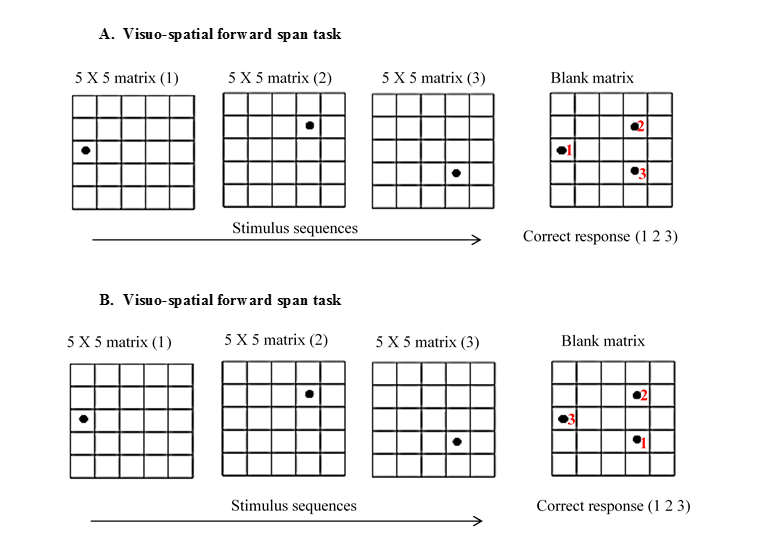

- #Digit span working memory test trial#
- #Digit span working memory test plus#
- #Digit span working memory test series#
They are then shown a blank grid and must reproduce the pattern. Instead, they see a checkerboard-like grid, with the squares in the grid each randomly colored (in one of two possible colors). In the visual patterns test, participants are not asked to remember a sequence of digits or shapes. The visual patterns test is an attempt to measure spatial memory only by limiting non-visual information (see Brown, Forbes, & McConnell, 2006). However, it requires remembering a sequence, and so conflates visual information (the location of the blocks) with non-visual information (the order the blocks were tapped). The Corsi test can be thought of as a test of visual and spatial working memory. On average, Corsi span is about five blocks (Kessels et al., 2002). The greatest number of blocks recalled correctly (and in order) is the individual's Corsi span.
#Digit span working memory test trial#
Similar to the digit span task, the number of blocks pointed to on each trial is increased so long as the participant continues to be successful, whereas incorrect responses end the task.
#Digit span working memory test series#
In each trial, the experimenter points to a series of blocks (one block per second), and the participant is asked to replicate the order in which the blocks are pointed to. The original Corsi test (now largely replaced by computer programs) used 9 identical blocks positioned irregularly on a board. The test-taker's digit span is the longest sequence correctly recalled.Ī related test is the Corsi block tapping test (Corsi, 1972), a measure of spatial memory capacity. When they answer correctly, the span (i.e., the number of digits to recall) increases incorrect answers end the test. They are then asked to recall the entire sequence in order (and in some variations, the sequence must be recalled backwards, a much more difficult task). In the digit span, a participant hears a sequence of numbers read aloud one at a time. Of the many variations in span task, the most common is the digit span task (see Wechsler, 1939), which is part of most standard clinical assessments and intelligence tests. One common method for assessing working memory capacity is span tasks (see Conway et al., 2005, for a review).

A second avenue of research is focused more on internal factors: why do some people have different memory capacities than others, and how can we measure that? The first track is the study of external factors that influence memory capacity: stimulus complexity, stimulus modality, stimulus size, rate of presentation of stimuli, the delay between encoding and test, and so on. Subsequent studies have built on this finding, mostly along two different tracks.
#Digit span working memory test plus#
In a pioneering study more than a half-century ago, George Miller (1956) found that short-term memory had a capacity of about seven items (as Miller put it, seven items plus or minus two). Brain scientists have long sought to quantify individual differences in cognitive abilities like memory and processing speed.


 0 kommentar(er)
0 kommentar(er)
